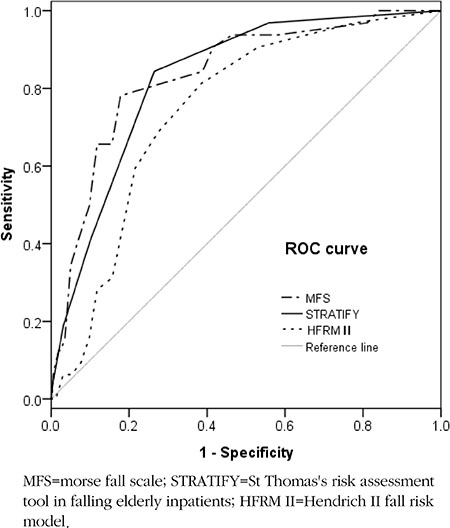1College of Nursing, Chonbuk National University, Cheonju, Korea.
2College of Nursing, Chonnam National University, Gwangju, Korea.
3Department of Nursing, Changwon National University, Changwon, Korea.
4Department of Nursing, Asan Medical Center, Seoul, Korea.
© 2013 Korean Society of Adult Nursing


CNS=central nervous system.
MFS=morse fall scale; STRATIFY=St Thomas's risk assessment tool in falling elderly inpatients; HFRM II=Hendrich II fall risk model.
MFS=morse fall scale; STRATIFY=St Thomas's risk assessment tool in falling elderly inpatients; HFRM??Hendrich II fall risk model.
AUC=area under ROC curve; MFS=morse fall scale; STRATIFY=St Thomas's risk assessment tool in falling elderly inpatients; HFRM II=Hendrich II fall risk model.
CNS=central nervous system.
MFS=morse fall scale; STRATIFY=St Thomas's risk assessment tool in falling elderly inpatients; HFRM II=Hendrich II fall risk model.
MFS=morse fall scale; STRATIFY=St Thomas's risk assessment tool in falling elderly inpatients; HFRM??Hendrich II fall risk model.
AUC=area under ROC curve; MFS=morse fall scale; STRATIFY=St Thomas's risk assessment tool in falling elderly inpatients; HFRM II=Hendrich II fall risk model.